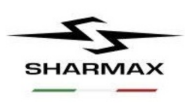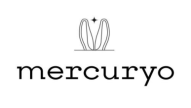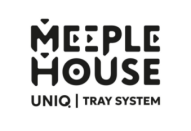Trademark registration in the EU
In the European Union, a trademark is a legally protected designation that allows one company's goods and services to be distinguished from those of others. Registering a trademark gives its owner exclusive rights to use the mark throughout the EU, and also protects against unfair competition and counterfeiting.
In the European Union, trademark registration is carried out through the European Union Intellectual Property Office (EUIPO). Once successfully registered, the trademark is valid for 10 years with the possibility of unlimited renewal.
Contents
Who needs a trademark (TM) in the European Union?
Registration of TM in the EU is important for:
- Companies doing business in the European Union - If you sell goods or services in EU countries, registering a trademark will protect your brand from being copied.
- Manufacturers and distributors - protects unique names, logos and slogans.
- Startups and entrepreneurs - even in the early stages of business development, it is important to secure brand rights.
- Online sellers (Amazon, eBay, Etsy, etc.) - prevents accounts from being blocked due to trademark claims, and allows you to participate in Amazon Brands.
Why is a trademark (TM) needed in the European Union?
- Exclusive rights - only the owner of the brand can use it for commercial purposes.
- Copy protection is the ability to sue violators, demand compensation or a ban on the use of similar signs.
- Increased brand value - a registered brand becomes a company asset that can be sold or licensed.
- Customer trust confirms the legality of the business and increases customer loyalty.
- Possibility of customs protection – the right to demand the seizure of counterfeit goods at the EU borders.
The procedure for registering a TM in the European Union
-
Filing an applicationAn application must be filed with the European Intellectual Property Office, located in Alicante, Spain.
-
Formal examinationWithin one month, the European Office checks the application for correctness of execution, the absence of absolute grounds for refusal, and the presence of similar trademarks already registered through this Office.
-
Publication of the applicationThe application is published in the EU Trade Mark Bulletin. Interested parties have three months to file objections to the registration of the trade mark.
-
Decision on the applicationIf no objections are received or they are found to be unfounded, the trademark is registered in the EU.
Peculiarities of TM registration in the European Union
A European trademark is legally valid in all member states of the European Union at the same time. Registration of the mark in the selected countries is not possible - either it is valid throughout the EU or is not registered at all. If obstacles arise with the process of registration in one of the countries, then the general registration in the European Union is also rejected. The transfer of rights to a European trademark is only possible in relation to all EU states at the same time.
During the formal examination of the trademark, the European Intellectual Property Office may (at the request of the applicant) check whether there are already registered similar European trademarks. If such marks are identified, the Office will notify the owners of the corresponding registrations. This increases the risk of filing oppositions against the new mark. In order to avoid possible problems, it is recommended to carry out a thorough check before filing an application for registration.
The validity period of a European Trade Mark registration is 10 years. Upon expiry, the registration can be renewed.
Our services for trademark registration in the EU
Registering a trademark in the European Union is a complex process that requires a professional approach.
The team of Law&Trust provides a full range of services to protect your brand in the EU. We provide legal support at all stages, from verifying uniqueness to obtaining a registration certificate.
We can offer:
- Consultation and preliminary analysis. We will determine the possibilities of registering your trademark. We will analyze the risks, identify potential problems with already registered marks. We will offer recommendations on the choice of classes of goods and services (according to the Nice classification).
- TM analysis (search for identity and similarity).
Deep check in EUIPO (EU Intellectual Property Office) databases and national registers.
Analysis of the risks of refusal or objections from third parties.
Report with recommendations for improving the sign ( if necessary ). - Preparation and submission of an application to the EUIPO.
Legal support during the registration process. - Responses to EUIPO inquiries (if clarifications are required). Protection against third-party objections (opposition procedure). Conducting negotiations with counterparties in case of disputes. Ensuring compliance with requirements, Fast Track, which will allow you to register a TM within six months.
- Obtaining a certificate and post-registration support
Control of registration completion.
Obtaining a certificate of trademark registration.
Consultations on extending protection (after 10 years).
F.A.Q.
Is it possible to register a trademark in the EU if it is already in use but not registered?
Yes, but with risks . The EUIPO does not require proof of use at the time of filing. However, if third parties prove that you have not used the mark within 5 years of registration, it may be cancelled for "non-use".
What should I do if my trademark is the same as a company name in an EU country?
The EUIPO only examines registered trade marks, not company names. But the owner of a trade name can file an opposition on the grounds of "company name rights". In such cases, the court will decide who has priority.
If my trademark is registered in one EU country, does this protect me in others?
No. National registration is only valid in one country. For protection throughout the EU, a European Trade Mark ( EUTM) through the EUIPO is required.
Is it possible to register a mark that already exists in the US or China, but not in the EU?
Yes, if there are no identical or similar marks in the EU. However, the owner of a foreign mark can challenge your registration if he or she proves that you acted in bad faith (for example, copied a well-known brand).
Can a colour or combination of colours be trademarked in the EU?
Yes, but only if the colors do not perform a utilitarian function (for example, green for eco-products). They are associated specifically with your brand.
























































